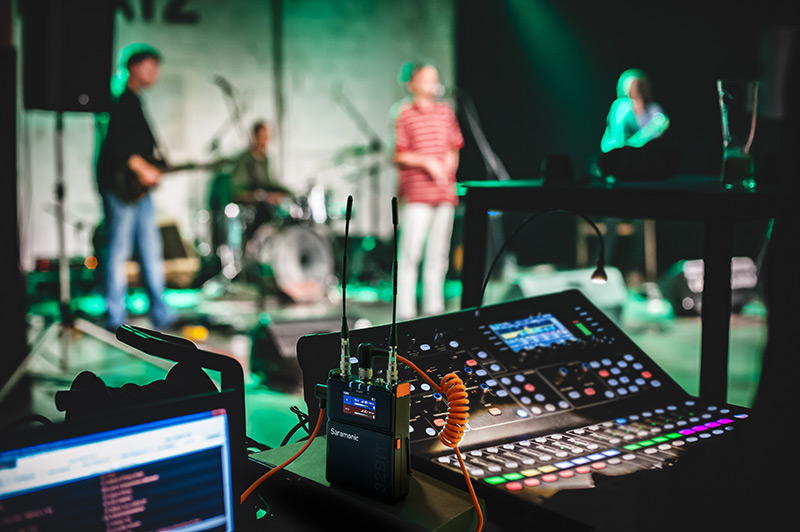Basically, a wireless mic system uses radio waves to carry audio. It has two main parts: a transmitter that converts sound into a radio signal and a receiver (put into your devices) that picks up that signal and converts it back into sound. It's a personal radio connection for your sound source.

Wireless mics operate on specific microphone frequency bands, which greatly affect microphone distance and susceptibility to signal interference.
Knowing your band helps anticipate issues.

The advertised range is often an "ideal conditions" number. Real-world wireless microphone range depends on several things:
Higher transmitter power (mW) helps, but is legally capped. Good antenna design and placement (especially external antennas on the receiver with clear line-of-sight) are crucial. Diversity receivers (using two antennas) significantly reduce dropouts.
This is huge. Walls (especially concrete/metal), large metal objects, and even crowds absorb or block radio signals, cutting microphone distance. Line-of-sight is best. Other radio sources (TV, Wi-Fi, other mics) cause signal interference.
Government rules limit which microphone frequency bands are usable, affecting channel availability and potentially range. Ensure your wireless mic technology is legal in your area.
If you need more distance than your normal setup delivers, there are strategies professionals use.
ADS (antenna distribution systems) are a popular solution. These allow multiple wireless receivers to share the same set of well-sited, high-quality antennas. With the addition of directional antennas (like paddles or helicals), performance can be further enhanced. These antennas point reception sensitivity toward the target zone (i.e., a stage) and reject signal interferences from elsewhere, effectively doubling the usable wireless microphone range of long-range microphones, especially in large theaters or challenging RF environments.
Modern digital wireless systems often incorporate more sophisticated audio transmission methods. These digital technologies can be more resistant to certain types of interference compared to older analog systems. Features such as predictive algorithms and error correction can help maintain clear audio even when the signal encounters minor disruptions, leading to more reliable performance at the edge of the operating range. High-end systems, including some professional models from Saramonic, are often engineered with robust radio links specifically for demanding long-range microphones applications common in broadcasting and film production, prioritizing signal stability and clarity over maximum possible distance.

Long-range wireless microphones are very important in several professional applications where mobility and good audio delivery are paramount. These uses are:
By understanding these factors and tuning your setup, you can maximize your wireless microphone range and deliver clean, reliable sound for your intended use case. This is important information for anyone looking to get the most out of their wireless microphone systems in any setting and application.
So how far can a wireless mic go? It really depends a lot on microphone frequency bands, power, antennas, signal interference, and barriers. Specs are only a guideline, and you need to test it out. With the variables in mind, optimizing your setup, and maybe using tools like antenna distribution, you can get your maximum effective wireless microphone range and have clean, reliable sound for your use. Investing in high-quality equipment and employing advanced signal management techniques can significantly enhance the performance and reliability of your wireless microphone system, making it suitable for a wide range of professional applications.